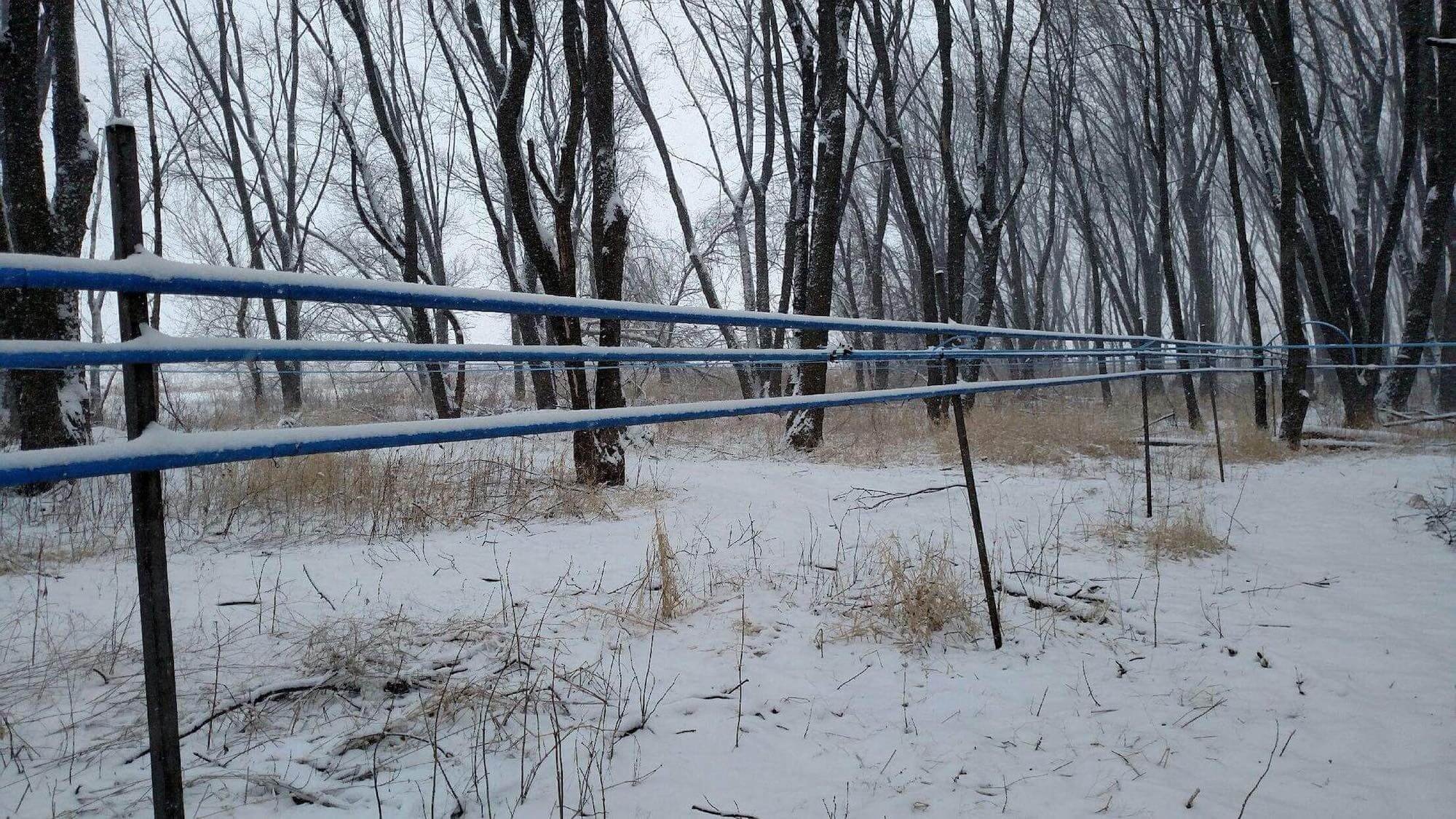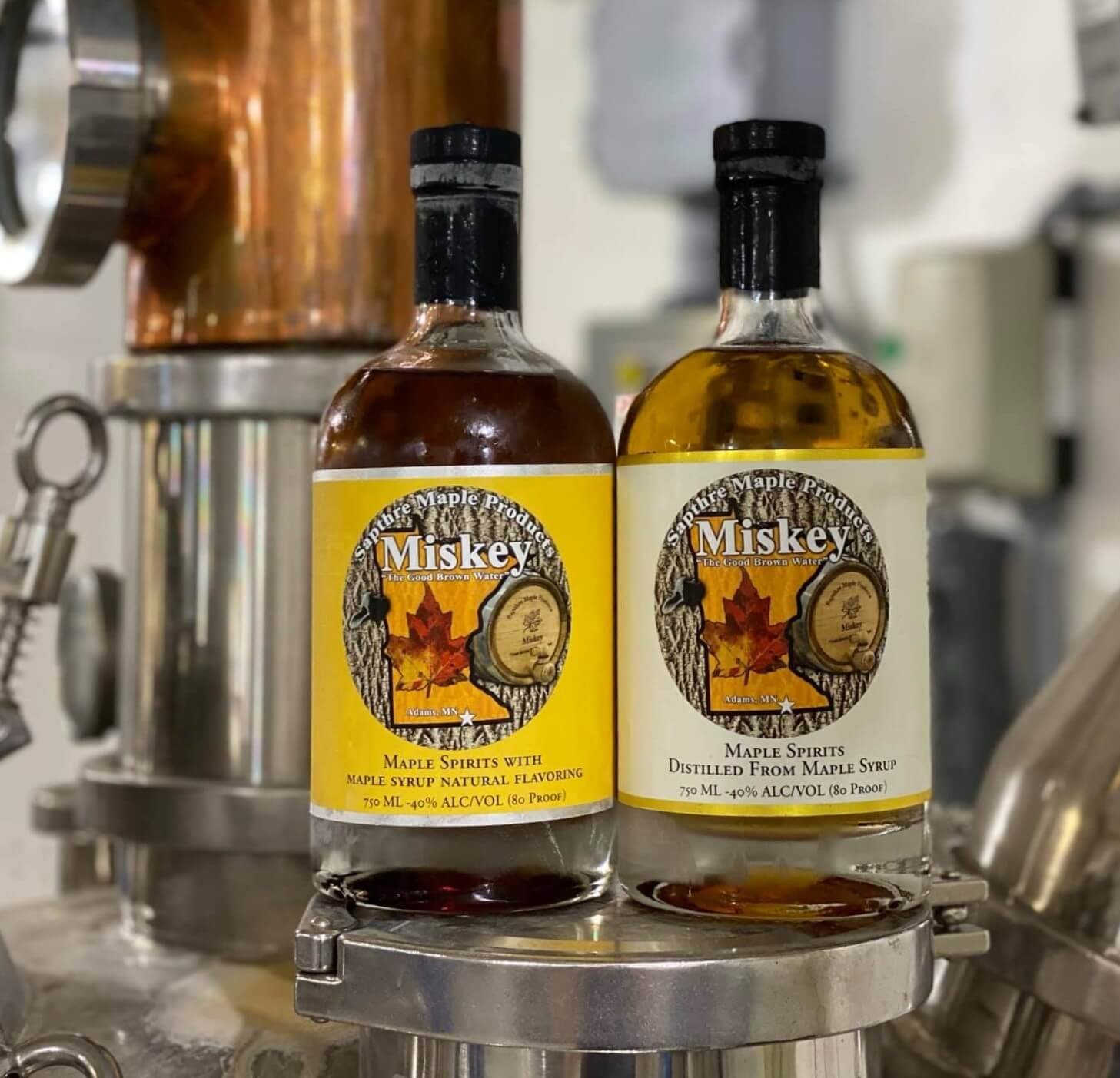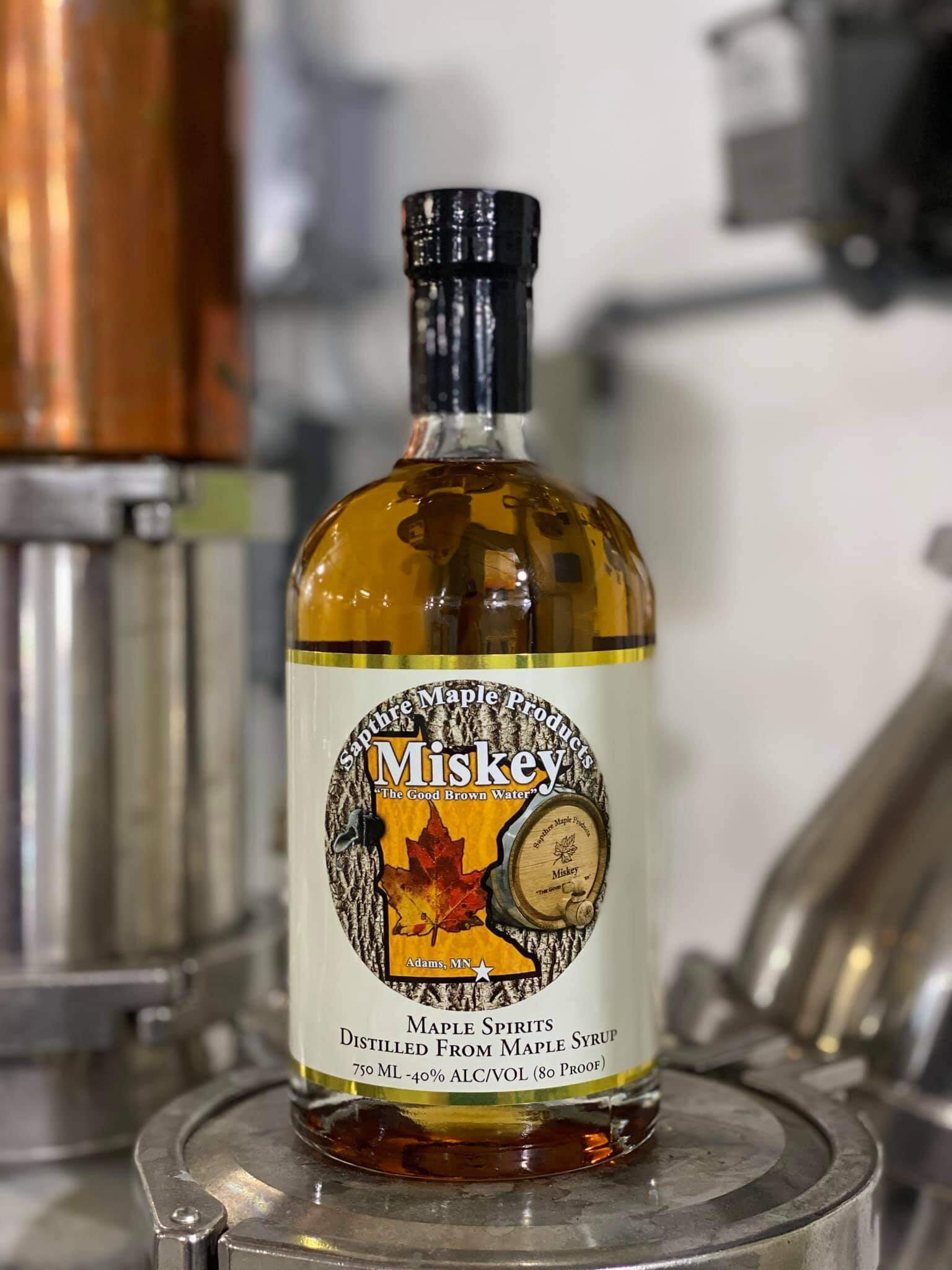How Kevin Sathre Turns Maple Syrup Into Whiskey One Drop at a Time
Editor’s note: Maple-flavored whiskeys abound, but whiskey made from real maple syrup is something else entirely. Thanks to contributor Stacy Brooks for sharing the story behind this unusual product.
Most maple syrup is destined to be poured over pancakes or drizzled onto French toast. However, at Sapthre Maple Products in Adams, Minnesota, it’s distilled into a unique alcoholic spirit that owner Kevin Sathre has coined “miskey” (a portmanteau of maple and whiskey). A handful of Canadian distilleries, as well as New York’s Hollerhorn Distilling and Ohio’s Red Eagle Distillery, produce similar maple-based spirits, but for most distillers, maple syrup is a cost-prohibitive ingredient, and that’s where Sapthre Maple Products has an edge: they make it themselves.
How “Miskey” is Made
In Minnesota, maple sap typically flows from about mid-March through mid-April, when daytime temperatures are in the high 30s to mid-40s and nighttime temperatures are below freezing. At Sapthre Maple Products’ 24-acre maple grove, sap is collected from about 2,400 taps connected to an 8-mile long pipeline and vacuum system.
Next, the sap is converted into maple syrup—first by removing 70-80% of the water via reverse osmosis, and then cooking down the concentrated maple sap into maple syrup. It takes about 30-40 gallons of maple sap to produce one gallon of pure maple syrup.
Unlike spirits such as whiskey and gin, which are produced from starchy grains that need to be milled and pressed into a mash, the maple syrup can be converted directly into a wort that will be fermented by yeast to produce alcohol. Next, the wort is distilled into an 80-proof spirit, and aged in barrels for a year.
Tasting Notes
For bureaucratic purposes, miskey is labeled as a “maple spirit”: “We don’t use grain, so we can’t call it bourbon or whiskey,” Sathre explains. “We can’t call it rum, since rum has to be made with sugar cane.” Name aside, taste wise miskey falls between the two. “When you open the barrel you can smell the sweetness, kind of like a rum, and you’ll have the smoothness of a bourbon. It’s the best of both worlds.” In addition to the original version, there’s a sweeter maple syrup-infused variation. “We’ve gotten a lot of good feedback,” says Sathre. “People like it on the rocks, or they dilute it down with water.”
Where to Find Miskey
Miskey is a relatively new product—it became available to the public in 2021—and currently is only distributed in southeastern Minnesota. In the immediate future, Sathre hopes to increase awareness of his product, which has been well-received at liquor store taste testings. Eventually, he’d like to open a tasting room (in Minnesota, microdistilleries can sell cocktails to the public from their premises). “There are lots of little distilleries around our area, it’s kind of like the brewery thing,” he says. “People travel to hit different spots, we’re hoping we can get a tasting room up and going in the next 5 years.”
Starting a microdistillery as a small family-owned business has been a tedious process, and marketing a new product is always a challenge, but as a maple syrup producer, Sathre is well-suited to tasks requiring patience. As the 2022 maple syrup season begins, he’s collecting the sap for the next batch of miskey, one drop at a time.




